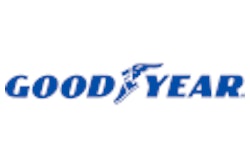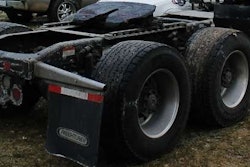Bigger’s not always better, especially when it comes to tire sidewall height. When spec’ing a truck for long-haul, you can give it a big boost of efficiency by choosing shorter sidewalls.
For long-haul, on-highway applications, Tim Miller, marketing communications manager for Goodyear Commercial Tires says he doesn’t “see a lot of rationale for why you wouldn’t want to change to a low-profile setup. The handling advantages, fuel-efficiency advantages – all of the pieces of a low-profile tire would seem to be something you would spec on a new vehicle, if not converting over midstream.”
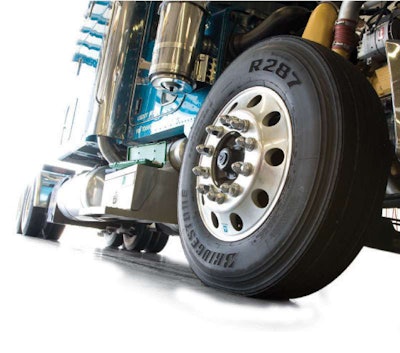 Low-profile tires, like the Bridgestone R287, offer long-haul drivers advantages in weight savings and rolling resistance.
Low-profile tires, like the Bridgestone R287, offer long-haul drivers advantages in weight savings and rolling resistance.And because low-pro tires have as much load-carrying capacity as standard-profile tires, there is no loss in that regard, says Michelin Product Category Manager Don Baldwin.
Here are the low-pro advantages:
LOWER TRUCK HEIGHT. A low-pro tire’s shorter sidewall means the vehicle’s floor sits a little lower. “As shippers require bigger trailers and more cubic volume,” low-profile tires allow for a taller trailer and therefore more capacity, says Larry Hess, sales manager at Midway Truck Service in Bethel, Pa. A shorter vehicle also equates to better aerodynamics, stability and handling, Miller says. The shorter sidewall also offers “better turning abilities because there’s less flexing,” he adds.
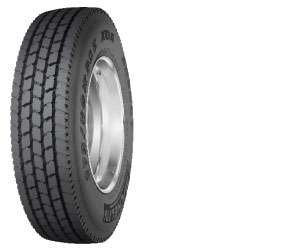 The Michelin XDA Energy is sized as 275/80R22.5. The tire weighs 124 pounds and has compounds engineered for fuel efficiency.
The Michelin XDA Energy is sized as 275/80R22.5. The tire weighs 124 pounds and has compounds engineered for fuel efficiency.REDUCED WEIGHT. Because low-pro tires are smaller, they reduce the weight of the vehicle. A lighter base weight allows for more carrying capacity or fuel savings. “If you extrapolate that over a year, you’re starting to see the result financially,” says Curtis Decker, commercial product development manager for Continental Tire.
REDUCED ROLLING RESISTANCE. The stiffness of the low-pro sidewall accounts for the improvement in rolling resistance over a tall tire, says Guy Walenga, director of engineering for commercial products at Bridgestone. “Technology could change, but generally speaking, they’re the more fuel-efficient tire right now.”
Miller says long-haul operations are the best application for low-pro tires partly because “that’s where you can take advantage of the fuel economy benefits” related to weight, rolling resistance and aerodynamics.
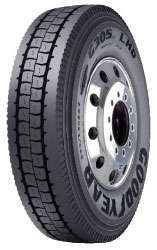 Goodyear’s G305 LHD Fuel Max is a cool-running tire with dual-compound construction that lowers rolling resistance. The tire is sized at 295/75R22.5 and has a 26⁄32-in. tread depth.
Goodyear’s G305 LHD Fuel Max is a cool-running tire with dual-compound construction that lowers rolling resistance. The tire is sized at 295/75R22.5 and has a 26⁄32-in. tread depth.EXTENDED TIRE LIFE. “Low-profile tires tend to have a wider, shorter footprint than a taller tire, which tends to have a longer and narrower footprint,” Walenga says. The wider footprint carries the load more effectively, as the narrower footprint has to work harder to carry the load. Consequently, Walenga says, the low-pro tire’s life cycle can be longer than that of a standard-profile tire.
Baldwin says low-pro tires have the same tread depth and tread volume as standard-profile tires, and, because of the smaller amount of materials, run slightly cooler than taller tires. n
When not to go low-pro
RETROFITTING. Using tires with a shorter sidewall than what the unit was spec’d to run causes the truck’s engine to run differently because the tires turn more revolutions per mile. This, in turn changes the engine’s rpm range.
“You literally change the gearing of the truck,” Bridgestone’s Guy Walenga says. “You change the engine performance. It’s not recommended that you go changing tire sizes.”
Goodyear’s Tim Miller says retrofitting can be done, however, by modifying the gear ratio to ensure the engine is running at maximum efficiency. Other changes, like calibrating the odometer and the speedometer to match the new tire sizes, would need to be done as well.
ON/OFF-HIGHWAY. Walenga says low-pro isn’t a good fit for on/off-highway applications because the shorter sidewall, due to its stiffness, doesn’t deflect as much as a tire with a taller sidewall. It’s not built to take the beating of off-road use.
URBAN. Miller says low-pro tires should be avoided in any application in which damage to the sidewall or the wheel is likely to occur. “You’re putting your vehicle closer to the ground and closer to the curb. Going with low-profile would do more harm than good in those situations.”
Wide-base singles
The new generation wide-base tire amplifies some of the benefits seen by low-profile duals, says Goodyear’s Tim Miller.
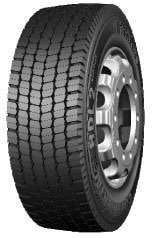 The Heavy Drive Long-Haul Deep Lug tire from Continental has a 32⁄32-in. tread depth and the Eco Plus’ compounding offers a lower rolling resistance. Its wider tread offers better wear.
The Heavy Drive Long-Haul Deep Lug tire from Continental has a 32⁄32-in. tread depth and the Eco Plus’ compounding offers a lower rolling resistance. Its wider tread offers better wear.“Replacing two tires with one lowers overall vehicle weight, which helps fuel economy. There are only two sidewalls instead of four, which makes them more efficient and helps them run cooler. Rolling resistance is also reduced, which allows an operator to spend a little less on fuel every month.”
Wide singles have an aspect ratio around 50 percent, due to the short sidewall and the extra width. However, because the sidewall height can be the same as that of other low-pro tires, they can be direct replacements for low-profile duals since their height won’t change the gearing of the truck. They are not replacements for tires with standard sidewall height.
Bridgestone’s Guy Walenga says fuel savings aren’t an inherent guarantee when switching from duals to a wide single because tires have so many attributes. “Tires can be engineered for fuel efficiency,” he says. “There are different tires, different manufacturers, different tread depths, different compounds – you have to take all of that into consideration.”
Low-pros by definition
A sidewall with a shorter height than width is deemed low-profile. These two measurements also yield the aspect ratio – the sidewall height measured in a percentage relative to the width of the sidewall at its widest point.
The aspect ratio of 11R22.5 tires – the typical height of the standard tire – is about 100 percent, meaning the sidewall height and width are the same, says Don Baldwin, product category manager at Michelin.
Low-pro tires’ aspect ratio is around 80 percent, Baldwin says, though some are lower.
These measurements are what constitute the tire’s sizing nomenclature. For instance, a low-profile 295/75R22.5 is 295mm wide at the tire’s widest point. It is 75 percent as high as it is wide – 75 percent of 295 mm, says Guy Walenga, director of engineering for commercial products at Bridgestone.

